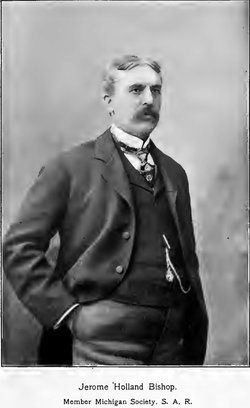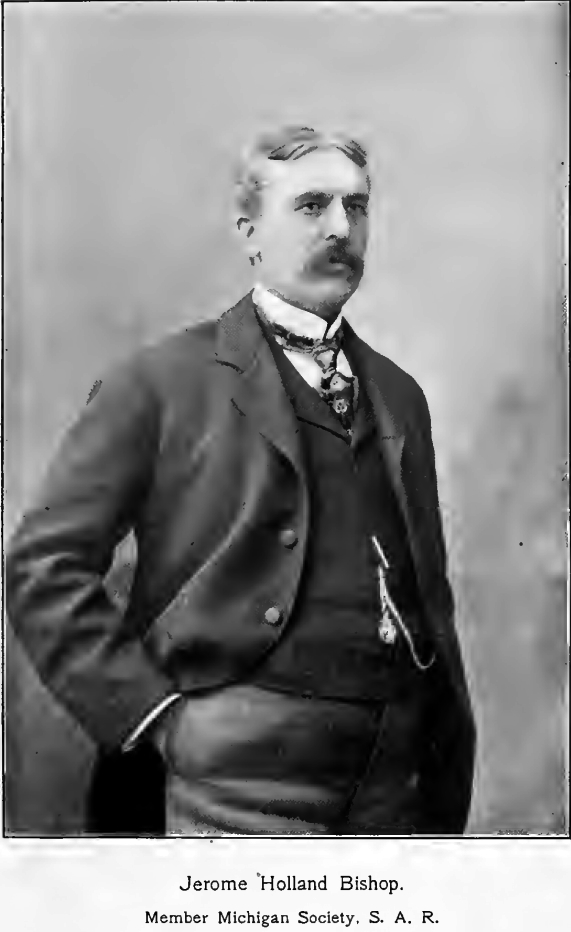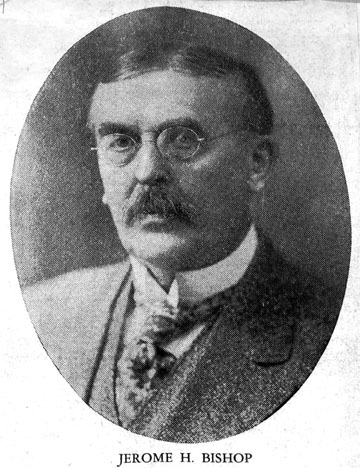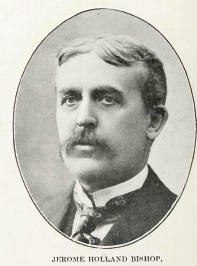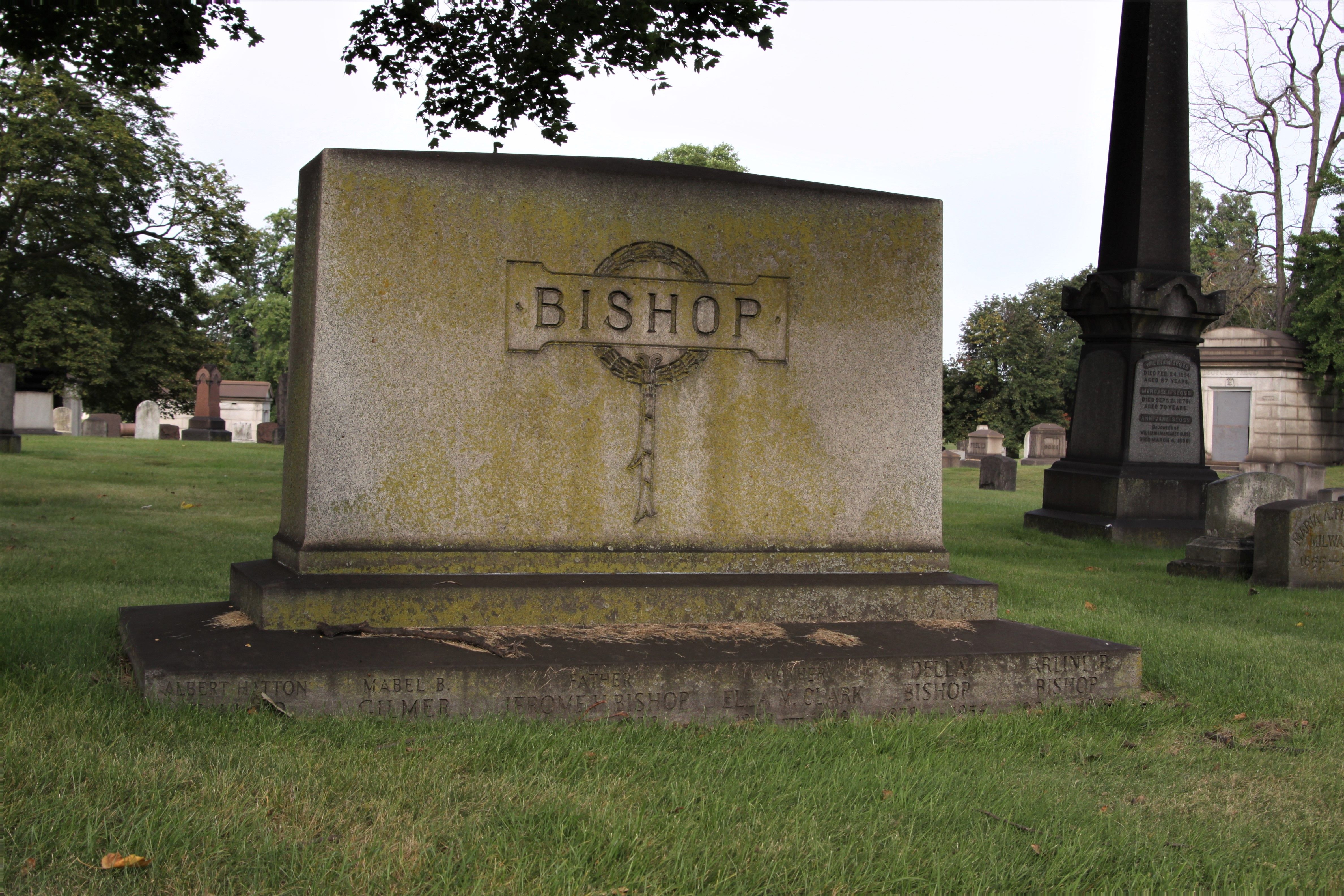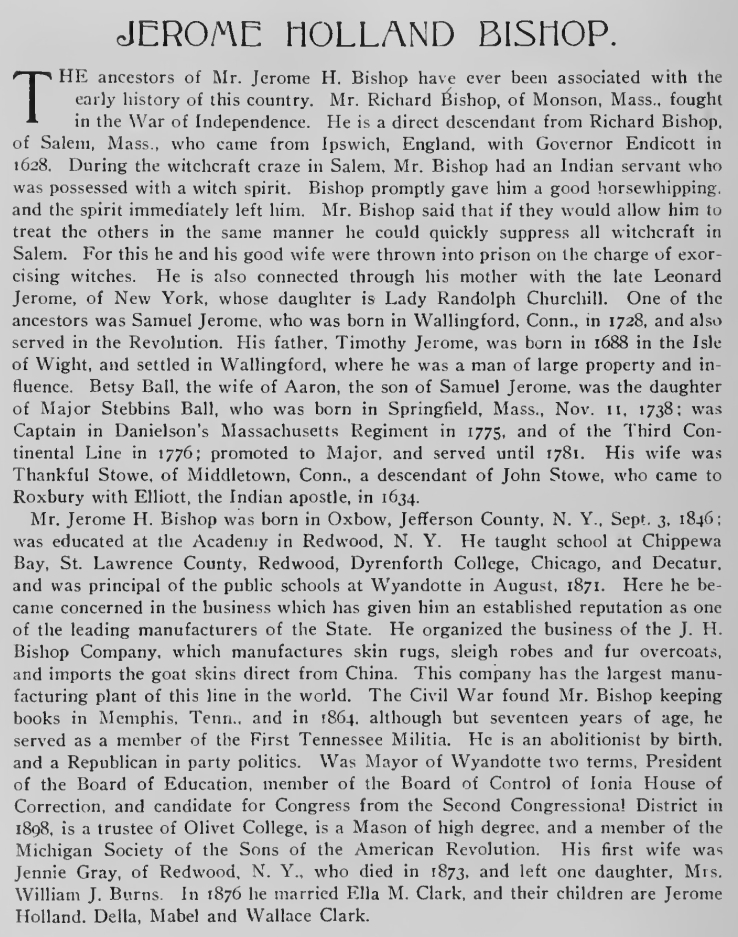In 1875, Bishop founded the J.H. Bishop Tannery on the shores of the Detroit River, on the land between Chestnut and Superior, in the location that is now known as Bishop Park. He made robes and dusters from wool sheep and later made rugs, robes and coats from imported skins.
Bishop, as Edwina M. DeWindt describes in the book Proudly We Record: The Story of Wyandotte, Michigan, was a pioneer in the fur business—being the "first in this country to import raw skins from China and Russia and dry and dress them in his own factory." Bishop also imported skins from Australia, South Africa and Europe. The later renamed J.H. Bishop Company supplied furs to people across the country and had offices in New York City, Boston and Seattle. The business later became known as the J.H. Bishop Co.
Bishop was married twice—once in 1867 to Jennie Gray and a second time to Ella Clark in 1876. Bishop and Gray had one daughter, Maud, who married William J. Burns. Clark and Bishop had four children—Jerome H. Bishop Jr., who served as vice president of J.H. Bishop Co.; Della; Mabel; and Wallace. The Bishop family built a home on the corner of Superior and Biddle in 1888 and resided in the large house for decades. In 1935, it served as the Wyandotte City Hall. The 12-story Bishop Co-op Senior Apartments now stands where the home once was.
Information for this biography was gathered from the book Proudly We Record: The Story of Wyandotte, Michigan by Edwina M. DeWindt and various documents retained by the Wyandotte Museums Archives.
In 1875, Bishop founded the J.H. Bishop Tannery on the shores of the Detroit River, on the land between Chestnut and Superior, in the location that is now known as Bishop Park. He made robes and dusters from wool sheep and later made rugs, robes and coats from imported skins.
Bishop, as Edwina M. DeWindt describes in the book Proudly We Record: The Story of Wyandotte, Michigan, was a pioneer in the fur business—being the "first in this country to import raw skins from China and Russia and dry and dress them in his own factory." Bishop also imported skins from Australia, South Africa and Europe. The later renamed J.H. Bishop Company supplied furs to people across the country and had offices in New York City, Boston and Seattle. The business later became known as the J.H. Bishop Co.
Bishop was married twice—once in 1867 to Jennie Gray and a second time to Ella Clark in 1876. Bishop and Gray had one daughter, Maud, who married William J. Burns. Clark and Bishop had four children—Jerome H. Bishop Jr., who served as vice president of J.H. Bishop Co.; Della; Mabel; and Wallace. The Bishop family built a home on the corner of Superior and Biddle in 1888 and resided in the large house for decades. In 1935, it served as the Wyandotte City Hall. The 12-story Bishop Co-op Senior Apartments now stands where the home once was.
Information for this biography was gathered from the book Proudly We Record: The Story of Wyandotte, Michigan by Edwina M. DeWindt and various documents retained by the Wyandotte Museums Archives.
Inscription
FATHER
Family Members
Sponsored by Ancestry
Advertisement
Explore more
Sponsored by Ancestry
Advertisement
